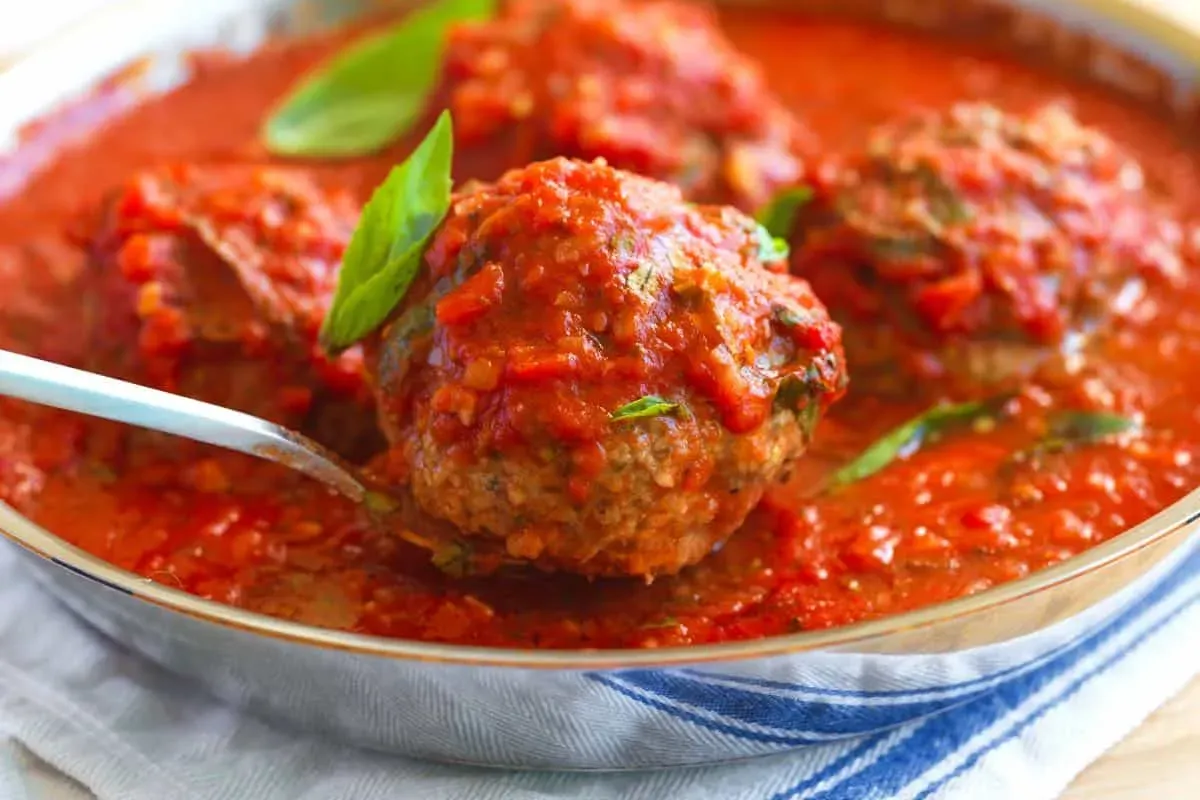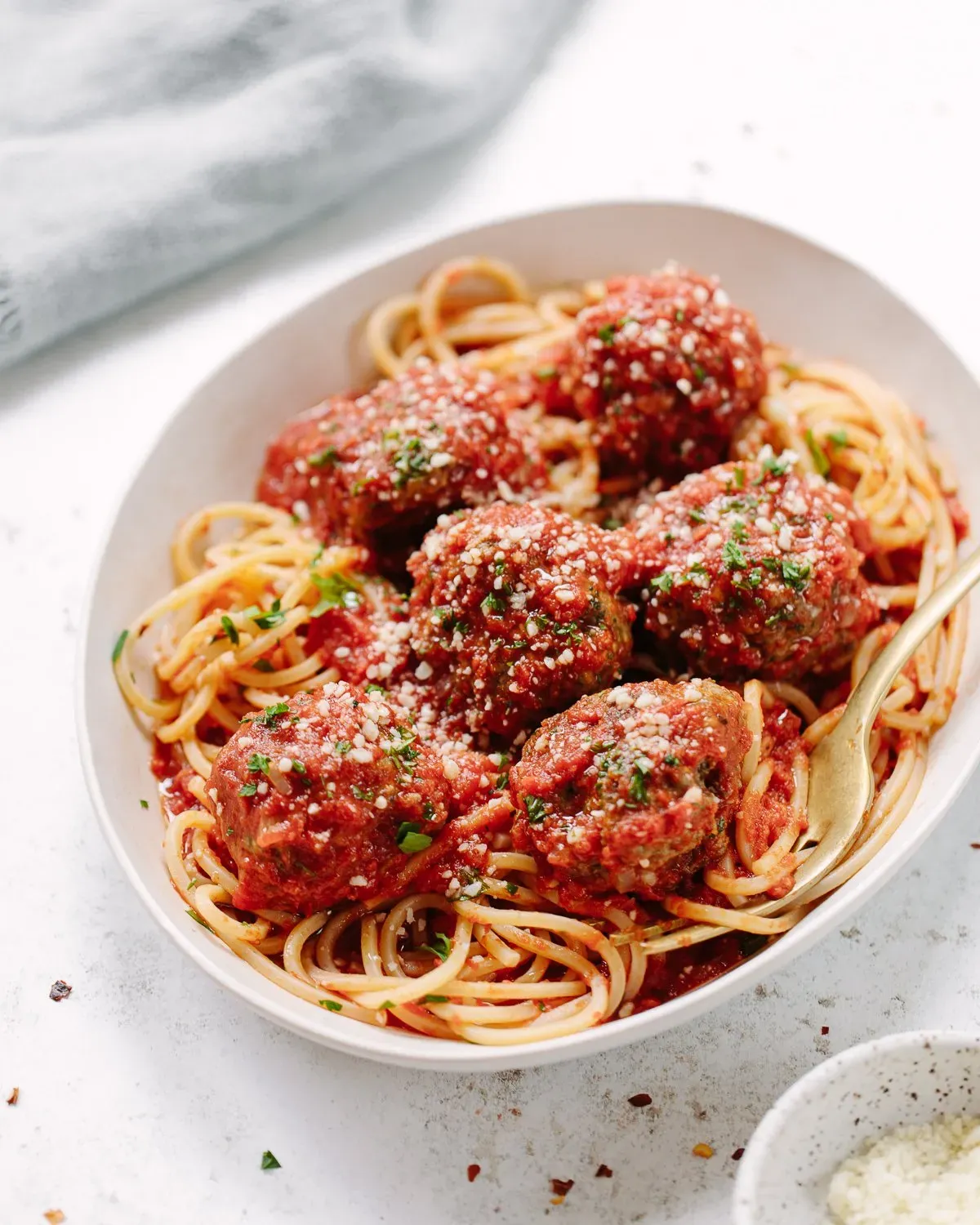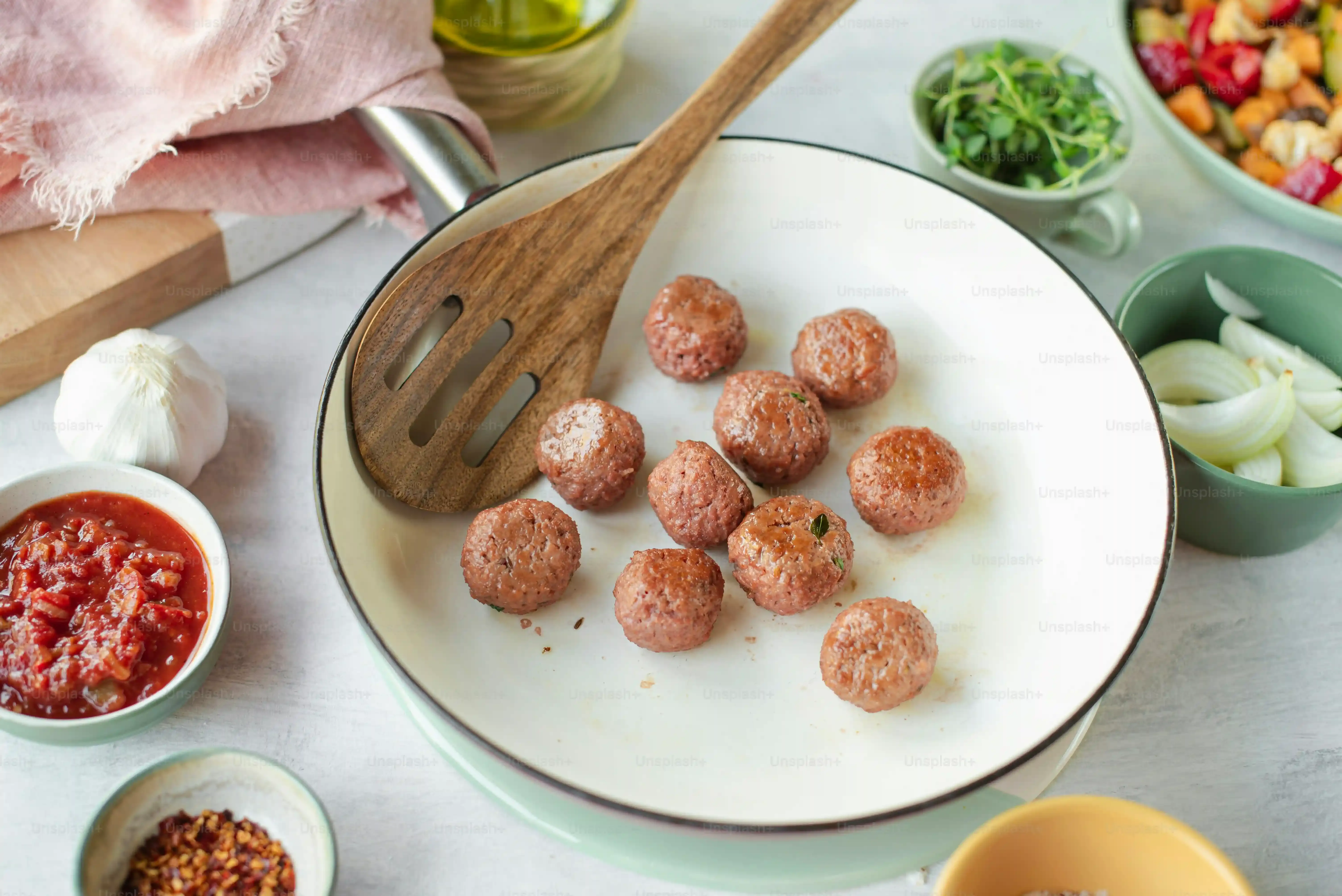Table of Contents
Let's cut to the chase. You're probably here because you've had meatballs. Maybe good ones, maybe... less good ones. You've likely scrolled through endless recipes promising "Grandma's Secret" or "The Best Ever," only to end up with something dry, dense, or just bland. It's frustrating, isn't it? That quest for a truly delicious italian meatball recipe can feel like chasing a culinary unicorn.
Why Your Delicious Italian Meatball Recipe Might Need a Tweak

Why Your Delicious Italian Meatball Recipe Might Need a Tweak
Common Pitfalls in Your Meatball Journey
Let's be honest. You've probably made meatballs that ended up tasting like spiced cardboard or fell apart like a sandcastle at high tide. Maybe they were tough, dry little pucks, or perhaps they just lacked that certain something – that deep, savory flavor that makes you close your eyes and sigh contentedly. This isn't just bad luck; it's usually down to a few common errors in the process. Getting a truly delicious italian meatball recipe isn't rocket science, but it does require paying attention to details often overlooked in quick-fix online guides.
Ask yourself:
- Are your meatballs consistently dry?
- Do they lack depth of flavor beyond just "meat"?
- Do they fall apart when simmering?
- Are they tough or rubbery?
The Foundation of a Truly Delicious Italian Meatball Recipe: Ingredients That Matter

The Foundation of a Truly Delicious Italian Meatball Recipe: Ingredients That Matter
Getting the Meat Mix Right for a Delicious Italian Meatball Recipe
Look, you can't make a silk purse out of a sow's ear, and you can't make a truly delicious italian meatball recipe with just lean ground beef. That's where many people go wrong. You need fat. Fat equals flavor and moisture. Using a mix is key. A classic blend is half ground beef (chuck is good, around 80/20 lean-to-fat ratio) and half ground pork. The pork brings moisture and a different kind of richness. Some folks even sneak in a little ground veal, which adds tenderness, but beef and pork are the workhorses here. Don't be afraid of the fat; it renders down and keeps things juicy. Skimp on the fat, and you're halfway to those dry, sad meatballs we talked about.
Binders and Boosters: More Than Just Filler
Beyond the meat, the stuff you mix in is crucial for texture and flavor in a delicious italian meatball recipe. Forget hard, dry breadcrumbs straight from the box. You want soft breadcrumbs, soaked in milk. This isn't just filler; it creates steam as the meatballs cook, keeping them tender. Use torn-up stale bread or even fresh crustless bread pulsed in a food processor. Soak it in whole milk until mushy, then squeeze out the excess liquid. Eggs are your binder, holding everything together, but don't go crazy – too many eggs make them bouncy. Then come the flavor bombs: finely minced garlic, fresh parsley, maybe some grated onion (sautéed first to mellow it out), grated Pecorino Romano or Parmesan cheese for that salty, umami kick, salt, and black pepper. These elements build the layers of flavor that elevate a meatball from merely edible to memorable.
Thinking about your ingredient choices?
- Are you using a mix of beef and pork?
- Are your breadcrumbs soft and milk-soaked?
- Are you using fresh garlic and herbs?
- Is your cheese adding enough punch?
Mixing and Shaping Your Delicious Italian Meatball Recipe

Mixing and Shaping Your Delicious Italian Meatball Recipe
The Gentle Art of Combining Ingredients
you've got your perfectly portioned meats, your mushy milk-soaked bread, and all those glorious flavor bits lined up. Now comes the critical step for your delicious italian meatball recipe: mixing. This isn't a wrestling match with a stubborn dough. Think gentle persuasion, not brute force. Toss everything into a large bowl – the meat, the squeezed-out bread mixture, the eggs, cheese, garlic, herbs, salt, and pepper. Use your hands, but keep them relaxed. The goal is to combine everything just until it's uniform, not to develop gluten like you're making pizza dough. Overmixing is a one-way ticket to tough, dense meatballs. You'll feel the mixture come together; stop right there. Don't knead it. Don't mash it aggressively. Just fold and mix gently until no single ingredient stands out.
Shaping for Success: Size and Consistency
Once your mixture is ready (and maybe chilled for 30 minutes if you have time – it makes shaping easier), it's time to roll. The size matters for a delicious italian meatball recipe. Aim for something around 1 ½ to 2 inches in diameter – roughly the size of a golf ball or slightly smaller. This size allows them to cook through without drying out the outside before the inside is done. Use a scoop if you want consistent sizes, or just eyeball it. When you roll them, be firm enough to make them hold their shape, but again, don't pack them like you're making cannonballs. A light touch is key. You want them to be round and relatively smooth, but not compressed. Place the shaped meatballs on a baking sheet as you work.
Keep these shaping tips in mind:
- Chill the mixture slightly if it's too sticky.
- Use a scoop for consistent sizes.
- Aim for 1 ½ to 2 inches in diameter.
- Roll gently; do not pack them tightly.
- Wash your hands periodically if the mixture gets too warm and sticky.
Cooking Your Delicious Italian Meatball Recipe: Stovetop vs. Oven

Cooking Your Delicious Italian Meatball Recipe: Stovetop vs. Oven
The Heat is On: Picking Your Method
you've mixed, you've rolled, and now it's time to apply some heat to turn those little spheres of potential into a truly delicious italian meatball recipe. You've got two main paths here: the stovetop simmer or the oven bake. Neither is inherently "better" universally; they just yield slightly different results and fit different workflows. Pan-frying first on the stovetop gives you that lovely, craggy, browned exterior with intense flavor development, perfect if you're planning to simmer them in sauce afterwards – the browning holds them together and adds depth to the sauce. Baking, on the other hand, is hands-off, less messy, and results in a more uniformly cooked meatball without the need for constant turning, great if you're making a big batch or just want to toss them straight into sauce from the oven.
Storing and Serving Your Delicious Italian Meatball Recipe

Storing and Serving Your Delicious Italian Meatball Recipe
you've successfully cooked your delicious italian meatball recipe, whether by searing and simmering or baking. Now what? The immediate answer is usually "eat them," preferably drowning in a good, slow-simmered tomato sauce over a pile of pasta. But sometimes you make a big batch (smart move) or have leftovers (less likely, but possible). For short-term storage, cooked meatballs keep well in the fridge for 3-4 days in an airtight container. If you've simmered them in sauce, store them *in* the sauce – it keeps them moist and lets the flavors meld even more. For longer-term storage, freezing is your friend. You can freeze cooked meatballs, either plain or in sauce. Freeze them in a single layer on a baking sheet first if they're plain, then transfer to a freezer bag or container once solid. This prevents them from sticking together in a giant, frozen meatball lump. They'll last in the freezer for up to 2-3 months.
Thinking about future meals?
- Are you making extra specifically for freezing?
- Will you freeze them plain or in sauce?
- Do you have suitable freezer containers ready?
Your Delicious Italian Meatball Recipe: The Final Word
So there you have it. Crafting a truly delicious italian meatball recipe isn't magic; it's about paying attention to the details. It's the right blend of meats, the moisture from soaked bread, the gentle touch when mixing, and the patience in cooking. Skip the shortcuts and the dubious "secret ingredients." Focus on these core principles, and you'll consistently produce meatballs that are tender, flavorful, and exactly what you hoped for. No need for grand pronouncements or emotional declarations about comfort food. They're just really good meatballs, and now you know how to make them.